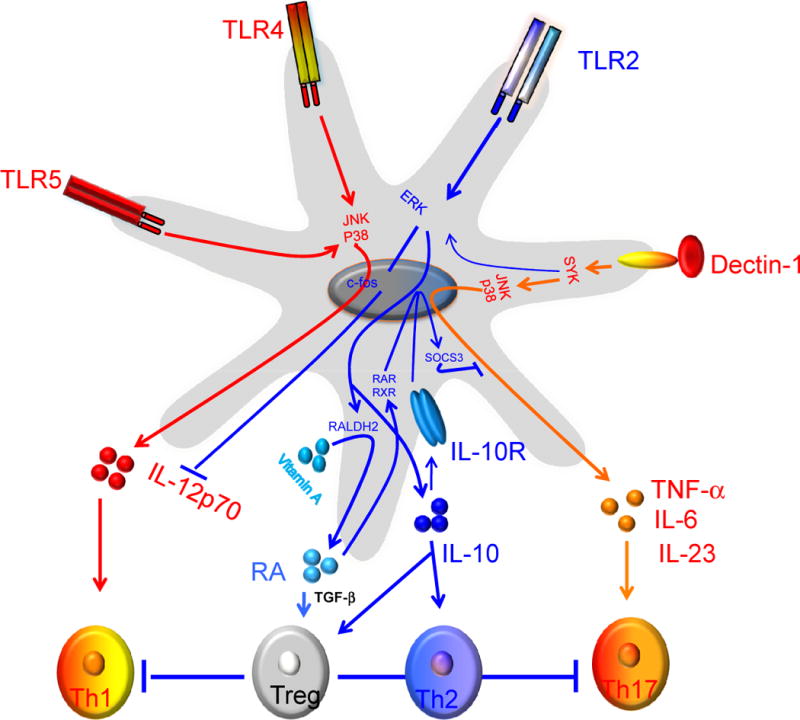Figure 3.

Programming DCs to induce Th1, Th2, Th17 or T regulatory responses. Signaling via TLR4 induces potent p38 and JNK1/2 MAPK activation which leads to the induction of interleukin-12 (IL-12) (p70). In contrast, Pam-3-cys, a TLR2/1 ligand, induce enhanced ERK 1/2 activation, which results in the stabilization of the transcription factor c-Fos that potently suppresses IL-12(p70) and enhances IL-10, thus favoring a Th2 bias. Interestingly, triggering DCs through TLR2/6 by zymosan efficiently induces ERK activation, which mediates induction of Raldh2. This results in the conversion of retinal to retinoic acid (RA), which then exerts an autocrine effect on DCs via RAR or RXR to induce SOSC3, which suppresses activation of p38 MAPK and proinflammatory cytokines. In contrast, zymosan mediated triggering of dectin-1in DCs promotes induction of proinflammatory cytokines IL-6 and IL-23 and thus mediates Th17 response.
